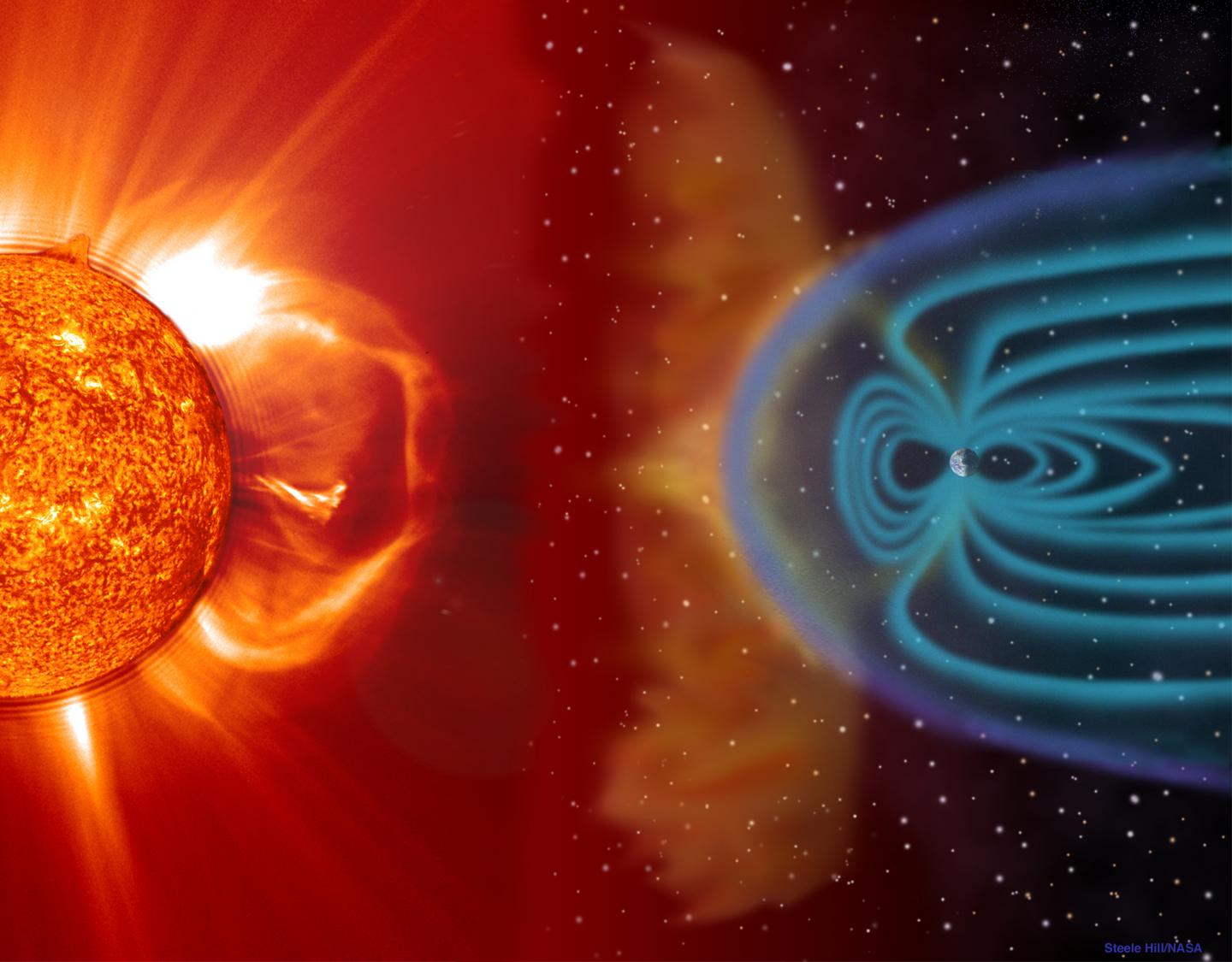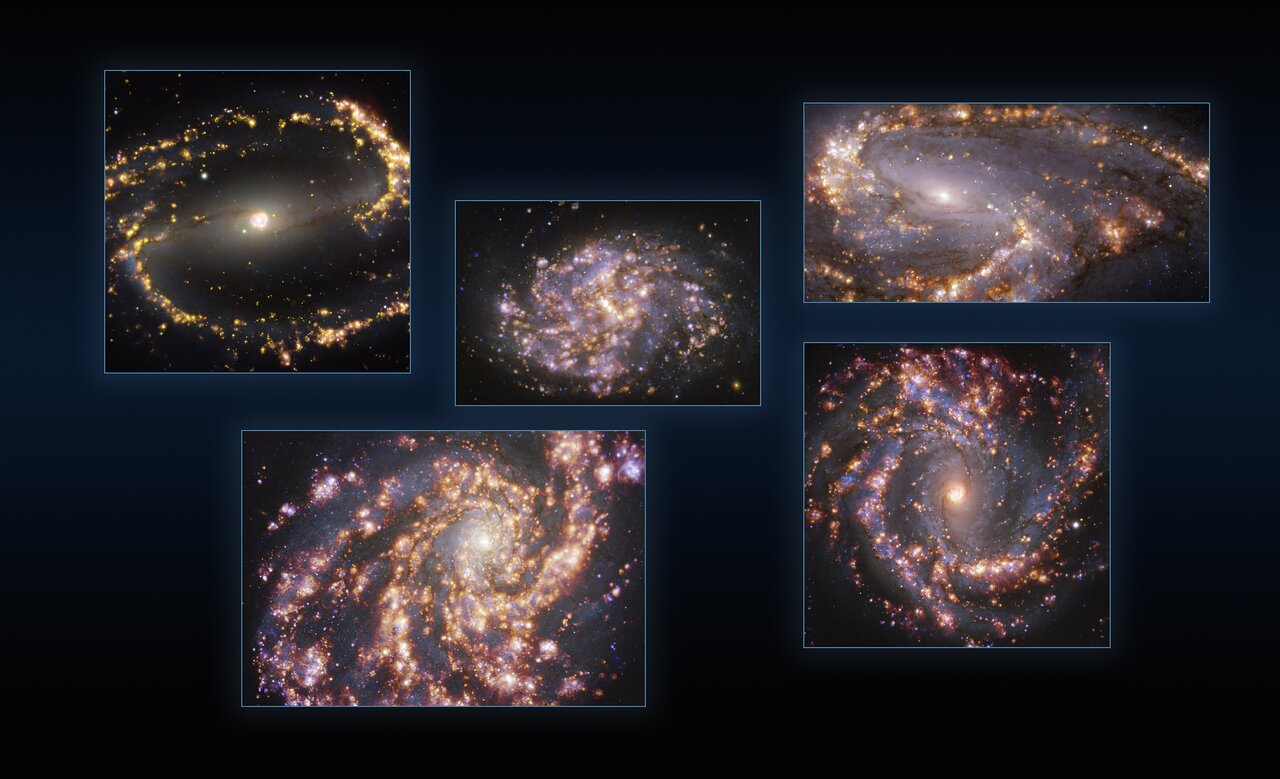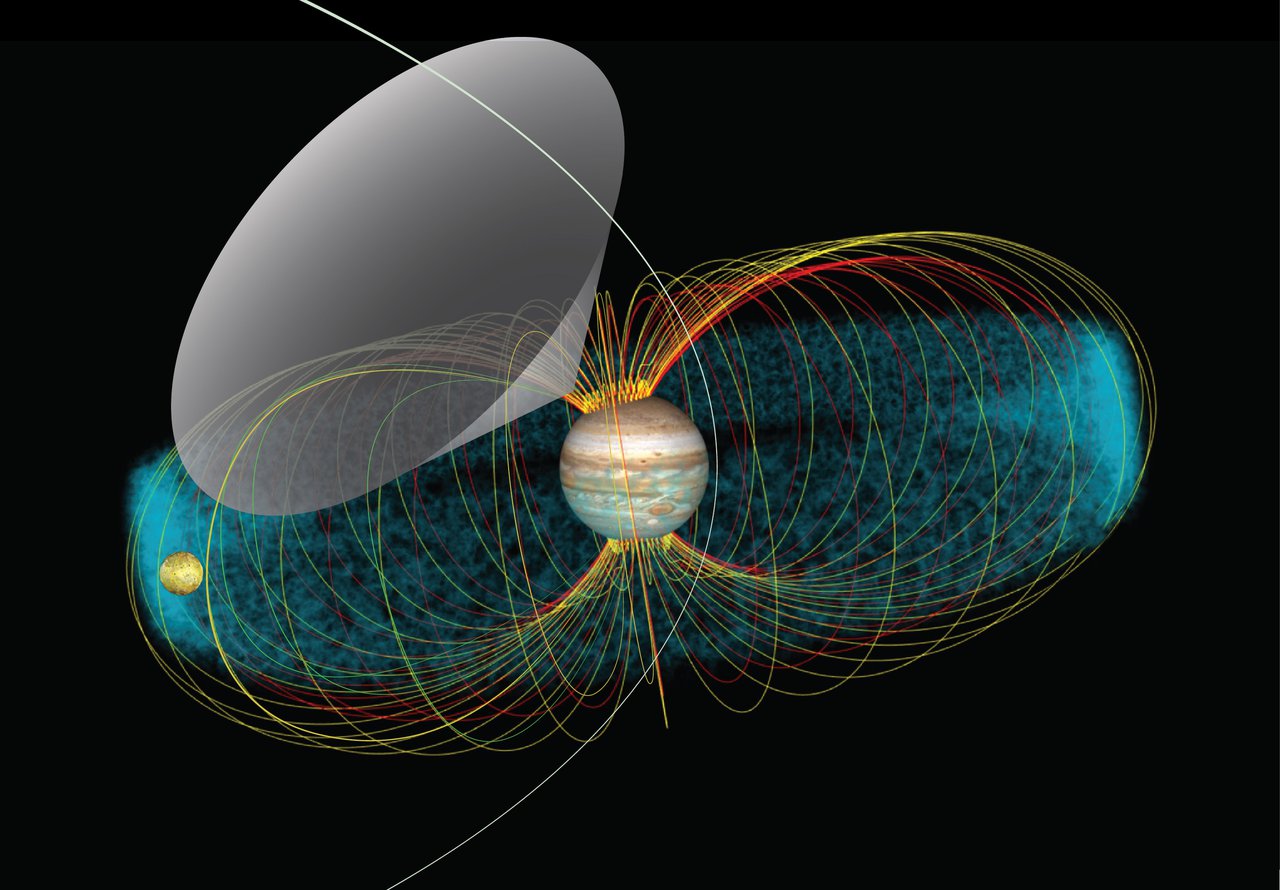After several weeks of trying different methods, the operations team successfully revived the stalwart Hubble Space Telescope, which experienced a payload computer fault back on June 13. The first images taken were of several unusual galaxies. Plus, Jupiter’s moon Io triggers radio emissions from the giant planet, and this week, What’s Up returns with a look at the Summer Triangle.
Podcast
Transcript
Hello and welcome to the Daily Space. I am your host Dr. Pamela Gay.
And I am your host Beth Johnson.
And we are here to put science in your brain.
We’d like to start off by letting you know, the Hubble Space Telescope is working again! We’re going to discuss its newest observations after the first break. But before we look at Hubble’s recovery, let’s look at Percy’s adventures in rock collection.

The Perseverance rover spent its first several months on Mars supporting the testing of the Ingenuity helicopter. Now that Ingenuity has zipped ahead on the travel path, Percy is getting to focus on doing some science while it roves. A major part of its mission is the collection of rock samples that will eventually be retrieved by another rover and rocket and brought back to Earth. The first sample is going to be collected from a region that is lined with cracked stones and scattered with rocks. It is estimated that it will take the rover eleven days to photographically document the region, have scientists pick the spot, and then for Percy to prepare its tools for the sample collection and actually collect the sample. Then we just wait a decade or so for the sample return mission.
Science is a long game.

Percy is one of many different missions that have searching for the stuff of life as part of their mission. It is my hope that within my lifetime we’ll learn how common it is for life to exist, however temporarily, on worlds with the required ingredients: nutrients, a solvent, and a thermal gradient. New research, unfortunately, is showing us that all naturally occurring environments may be only temporary.
Here on Earth, our atmosphere and life within are protected by our world’s strong magnetic field. New research published in the Monthly Notices of the Royal Astronomical Society and led by Dimitri Veras finds that the stellar winds of dying stars are sufficiently powerful to blow through those protective magnetic fields and destroy the worlds beneath. This means that while planets around white dwarfs may have the conditions for life, any life that exists will need to have formed after the white dwarf or will need to find a way to survive the formation of the white dwarf somewhere safely inside the planet.
The universe isn’t a safe place, and a variety of different violent processes are regularly documented by astronomers. In general, documenting the sky is a task made complex by the vastness of the universe and the limits of our telescopes. Occasionally, however, we get home help from light.
It turns out that different events have very distinctive colors, and a new data set combines optical data from the Very Large Telescope (VLT) with millimeter data from the Atacama Large Millimeter/submillimeter Array (ALMA) to highlight star formation. Astronomer Eric Emsellem, the optical observing lead, states: For the first time, we are resolving individual units of star formation over a wide range of locations and environments in a sample that well represents the different types of galaxies. We can directly observe the gas that gives birth to stars, we see the young stars themselves, and we witness their evolution through various phases.

The use of two very different telescope sets allowed researchers to map both the cold gas that will form stars using ALMA and the hot gas and the stars forming within it using the VLT. According to collaborator Kathryn Kreckle: There are many mysteries we want to unravel. Are stars more often born in specific regions of their host galaxies — and, if so, why? And after stars are born, how does their evolution influence the formation of new generations of stars?
The data released this week is stunningly beautiful, and the science that is possible is even more stunning. Now we just have to wait while folks do their analysis. But hey, we have nice things to look at while we wait.
The Hubble Space Telescope launched in 1990, and like so many NASA missions, it has continued to work far longer than anyone ever imagined. Originally launched on a fifteen-year mission, we almost lost Hubble in 2009 at age 19 after parts of its pointing system failed. The general outcry of both the science community and the general public convinced NASA and Congress to allow a final shuttle mission to an altitude that the Shuttle really wasn’t supposed to fly to after the Columbia disaster in 2003. That final servicing mission installed new batteries, new gyroscopes, new computers and guidance systems, and installed two new instruments in the place of two instruments that had reached the end of their life.
At the time, I remember hearing budget wonks declaring sternly that we could only have Hubble until JWST was launched because the budget needed to administer JWST in orbit was the same budget used to administer Hubble, and we couldn’t have both at once; there just wasn’t the budget.
Here we are, twelve years later, and Hubble is still orbiting, and JWST, which was already overdue to launch in 2009, is still on the ground. Spitzer, the great infrared observatory that was due to be shut down around 2010, kept going until 2020 to keep getting us infrared images while we waited for JWST. Put another way, JWST’s delays meant some pretty special telescopes got a longer lease on life.

As anyone with a beloved old piece of tech knows, every piece of electronics has a day when it just stops working. My Wii now sits on a shelf making me sad in its refusal to function. Spitzer’s batteries would no longer charge sufficiently, and it had to be turned off. Hubble gave us a good scare but is working again.
On June 13, one of Hubble’s computers crashed, and it put itself into safe mode. To be frank, at age 31 I, too, started to periodically crash. While the spacecraft wasn’t able to perform most of its functions, it was still in contact with its operators and capable of receiving commands and updates. After what felt like an archeological search through 1980s-era documentation, and with the help of software and computer engineers who returned from retirement, they were able to systematically figure out what needed to be turned off and on and what software needed to be reinstalled with updates. On Saturday, July 17, after what I feel comfortable saying was one of the most masterful and careful computer rescues, Hubble was able to return to service.
Among the first images taken were these unusual galaxies being studied by Julianne Dalcanton and her research team. On the left is a pair of merging galaxies, and on the right is an unusual three-armed galaxy that is likely the result of a damaging interaction between galaxies. A lot more data and a lot more time are needed before we can see these systems in their full glory and understand them with new levels of detail, but it is still exciting to see them in these crisp images.
Hubble was one of four great observatories launched in the last century. These flagship missions included the Compton Gamma-ray Observatory, which retired in 2000 and has since been supplanted by the Fermi Gamma-ray Telescope. Spitzer was also part of this program, as was the Chandra X-ray Observatory. Planned to fly for five years, this mission is still going strong and returning amazing science.

In a new image, Chandra has revealed what looks like a small jellyfish in a bubble of space. In reality, the giant bubble Chandra sees is a massive galaxy cluster that is consuming a smaller cluster plunging toward its core. The light we’re seeing comes from the hot intracluster gas, and the structures show us where materials of different temperatures and densities are located. The features that look like jellyfish arms are actually tails of hot gas pulled out of the smaller cluster.
Chandra rarely works alone, and in this research, Chandra data have been combined with optical images that show galaxy locations from PanSTARRS and radio data from LOFAR highlights which of the galaxies have actively feeding central black holes. Together, this data allows researchers, and us, to see how gas interacts and galaxies get disrupted during mergers and reminds us that an old observatory can still do amazing science.
By now, most of our audience likely knows that my favorite moon is Io, the closest in of Jupiter’s four Galilean moons. Io is an incredibly volcanic body, constantly being squeezed by the gravitational forces of both Jupiter and two of the other Galilean moons. The squeezing heats up Io’s interior, which then provides the power to generate multiple volcanic eruptions all over the small moon. Images of lava fountains have been captured by the Galileo, Voyager, and New Horizons spacecraft. Now, NASA’s Juno is at Jupiter, collecting data on the gas giant and its moons, Io included.
Jupiter, of course, is the largest planet in our solar system. As Pamela talked about last week, it is the planet against which we compare exoplanets. We look at it as a standard, despite it being wildly different from every other planet in our solar system. One of the ways that Jupiter is different is its huge magnetic field. That’s the main reason Juno was sent to Jupiter: to gain an understanding of that magnetic field, which stretches from 3.2 million kilometers in the direction of the Sun to more than 965 million kilometers away from the Sun. It’s huge. So big as to be incomprehensible to the human mind. And yet, we can use what we learn about Jupiter and its magnetic field to potentially understand similar planets elsewhere in the galaxy.
But why did I even bring Io up? Well, it turns out that Io’s volcanoes and the gas and particulate matter that erupt from those volcanoes are affected by Jupiter’s magnetic field in a really interesting way. Side note: Io releases one ton of that matter into space every second! So this isn’t a matter of a little effect; it’s a noticeable effect that researchers analyzing Juno’s data have figured out.

Per the press release: Some of this material splits up into electrically charged ions and electrons and is rapidly captured by Jupiter’s magnetic field. As Jupiter’s magnetic field sweeps past Io, electrons from the moon are accelerated along the magnetic field toward Jupiter’s poles. Along their way, these electrons generate “decameter” radio waves (so-called decametric radio emissions or DAM). The Juno Waves instrument can “listen” to this radio emission that the raining electrons generate.
These radio waves are propagated out from Jupiter as the electron particles fall, emerging out in a hollow cone shape. Juno can then receive the signal from those waves as they sweep past the spacecraft. Think of it like a lighthouse where the waves are the beacon and the spacecraft is a ship at sea — the light is only seen when it passes by the ship.
On top of understanding the shape of the cone and the length of the radio waves, the team also used Juno’s data to calculate the energy of the electrons emitted from Io and found that the energy levels are as much as 23 times greater than previously estimated. And while the particles in this instance are thought to be from Io’s volcanoes, they could be from Jupiter’s magnetosphere or even from the Sun via the solar wind.
The work was published last year in JGR Planets, but this week’s press release included a link to a video that translated the radio emissions to human frequencies. We’ll have a link to that video at our website, DailySpace.org, so that you can listen to it as well.
What’s Up

Summer skies are amazing for a lot of reasons. The fact that you can stay warm without wearing vast amounts of clothing is only one of those reasons. This time of year, the disc of the galaxy spills across the sky, allowing folks with binoculars and telescopes to easily observe clusters of stars. Many of these fuzzy star blobs were initially cataloged in the New General Catalogue, which was initially compiled in 1888 and drew on data collected by the likes of the Herschels in the late 1700s and early 1800s and by James Dunlap in the early 1800s.
When these objects were first found, we didn’t know about the differences between newly formed open star clusters, ancient globular clusters, or even galaxies. This stunningly beautiful cluster is 35,000 light years away and sprawls across the sky. Its sprawl and its location not too far from the Milky Way on the sky led to folk believing it was a long open cluster until 1959! Today, this object, which shines in the Scorpio constellation, is known to be an ancient globular cluster. While best observed with something like the Hubble Space Telescope, this system is still stunning in a 12-inch or larger backyard telescope with an off-the-shelf digital camera.
If you’ve never known how to find the path of the Milky Way through the sky, summer is the time to go out and look. High in the sky, a massive triangle made of the stars Vega, Deneb, and Altair marks out a section of the Milky Way. If you are in a dark location with binoculars, these three stars can be used to point out a bunch of cool features.

Vega, part of the constellation Lyra, is a couple binocular fields away from the beautiful Ring Nebula. Deneb is the rear of Cygnus the Swan, and if you can follow this bird’s neck to its end, you can find the double star Albireo. If you have always thought of stars as single white points of light, this pair will teach you just how colorful stars can be. Using either massive binoculars or a small telescope, this system can be resolved into amber and sky blue stars.
That third star, Altair, is the brightest star of Aquila the swan, and that constellation is actually pretty boring, but if you have a larger scope and a good camera, there is a planetary nebula, the Phantom Streak Nebula, and an open cluster.
Go out. Find the summer triangle with your eyes and the Milky Way that streams through it. Explore more as your equipment allows, and remember bug spray.
This has been the Daily Space.
Learn More
Percy Prepares to Collect Rocks on Mars
- NASA press release
Magnetic Fields Won’t Be Enough to Protect Planets Against Stellar Death
- NAM press release
- Planetary shields will buckle under stellar winds from their dying stars (EurekAlert)
Star Formation is Highlighted by New Data Set
Hubble Returns to Work, Capturing Mashed Up Galaxies
- NASA Returns Hubble Space Telescope to Science Operations (NASA)
- Hubble Returns to Full Science Observations and Releases New Images (NASA)
- Hubble press release
Chandra X-ray Captures Another “Jellyfish” in Space
- Chandra press release
- “Nonthermal phenomena in the center of Abell 1775: An 800 kpc head-tail, revived fossil plasma and slingshot radio halo,” A. Botteon et al., 2021 May 11, Astronomy & Astrophysics
- “The Merger Dynamics of the Galaxy Cluster Abell 1775: New Insights from Chandra and XMM-Newton for a Cluster Simultaneously Hosting a WAT and a NAT Radio Sources,” Dan Hu et al., to be published in The Astrophysical Journal (preprint on arxiv.org)
Juno Tunes Into Jupiter’s Radio Transmissions
- NASA Goddard press release
- NASA JPL press release
- “Juno Reveals New Insights Into Io-Related Decameter Radio Emissions,” Yasmina M. Martos et al., 2020 June 18, JGR: Planets
What’s Lost is Found: Star Cluster NGC 6380
- NASA Goddard press release
What’s Up: The Swan Swims a River of Milk
- Come To Know The Summer Triangle (EarthSky)
- Find The Famous Summer Triangle (EarthSky)
Credits
Written by Pamela Gay and Beth Johnson
Hosted by Pamela Gay and Beth Johnson
Audio and Video Editing by Ally Pelphrey
Content Editing by Beth Johnson
Intro and Outro music by Kevin MacLeod, https://incompetech.com/music/


 We record most shows live, on Twitch. Follow us today to get alerts when we go live.
We record most shows live, on Twitch. Follow us today to get alerts when we go live.